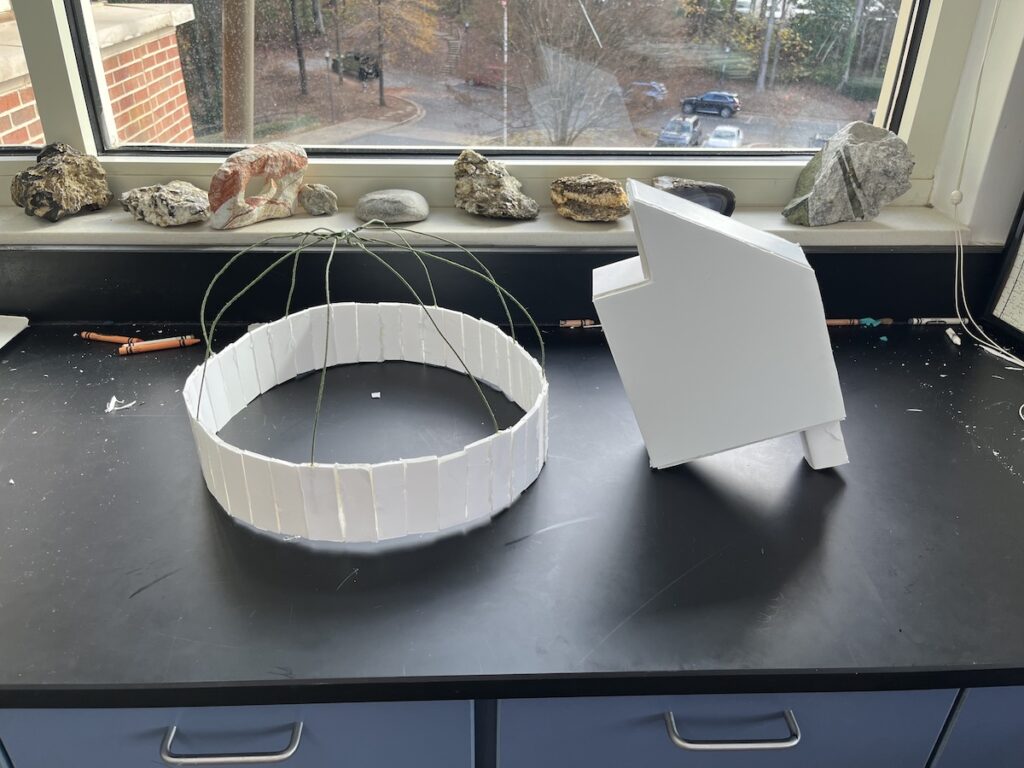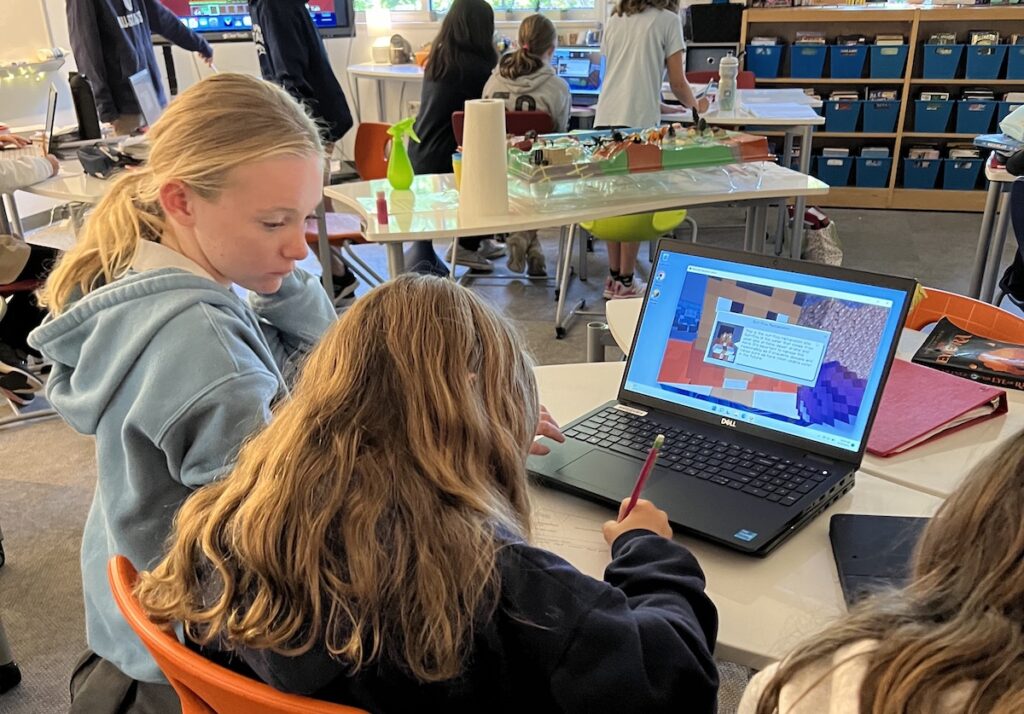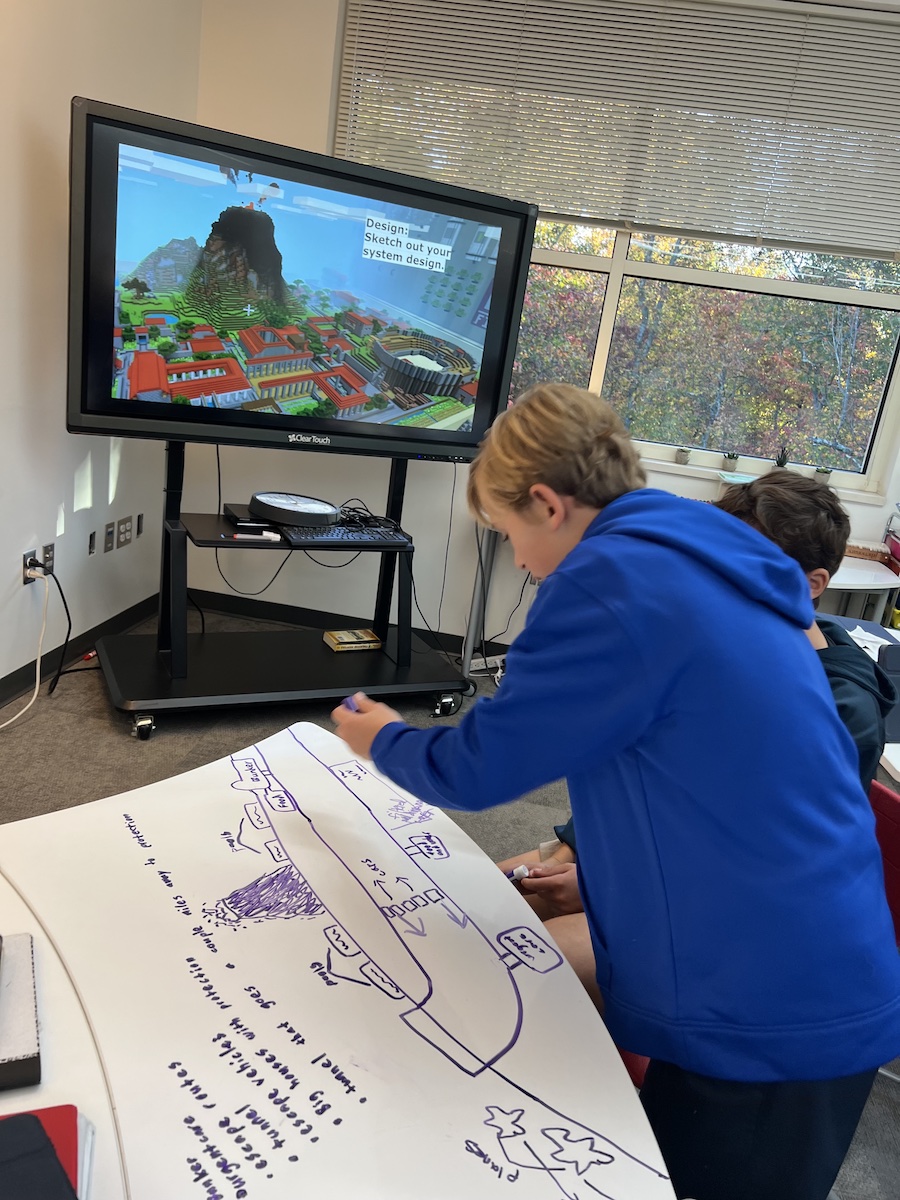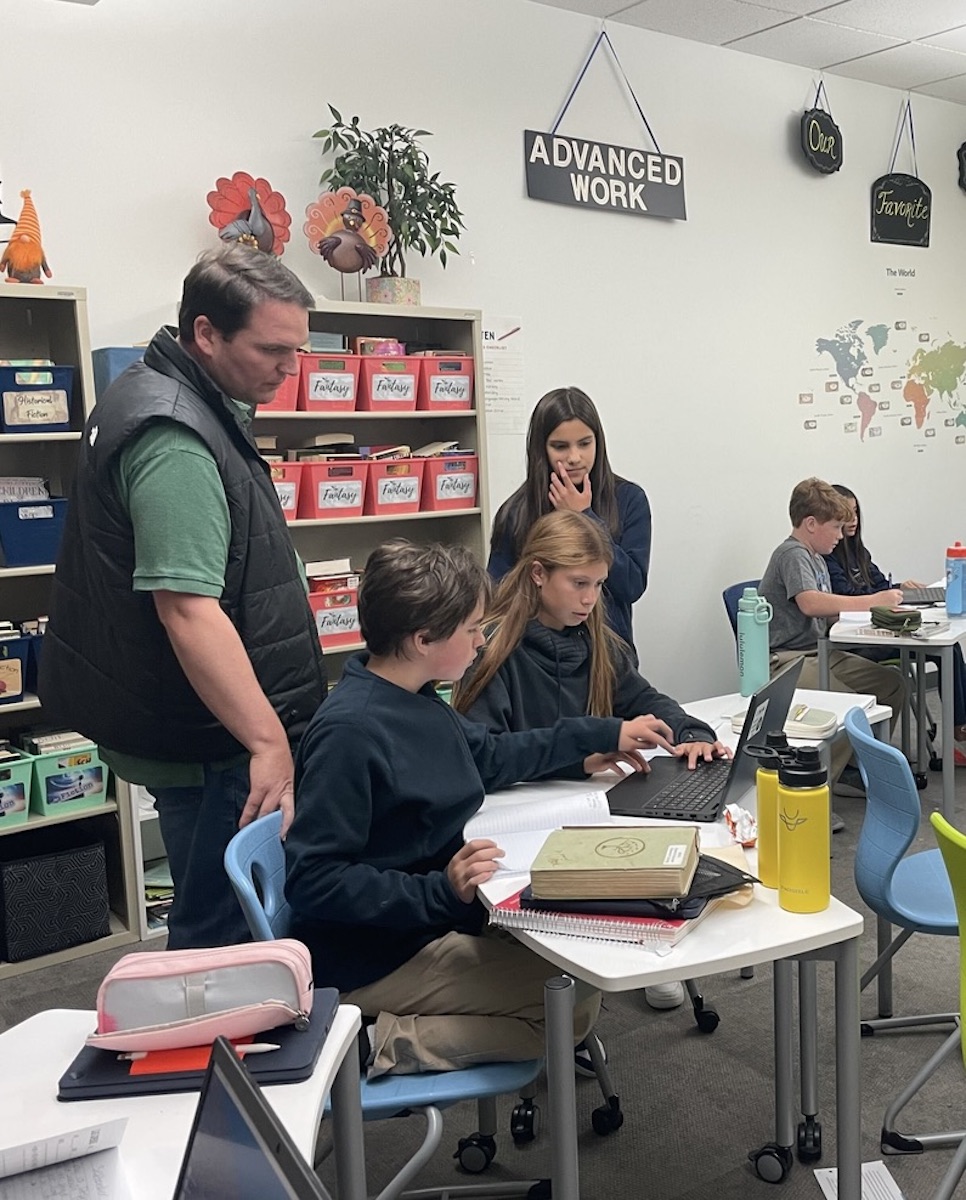Grade 6 students are diving deep into the concept of sustainability. Since the beginning of the year, students have explored how weather and natural disasters can affect a city, how to build earthquake-resistant homes, design sustainable food production networks, develop recycling policies, explore alternative energy sources, and more. This interdisciplinary unit leveraged Edtech tools including Minecraft Education Edition and Virtual Reality headset tours as well as interactions with MVXperts. With the knowledge students are gaining throughout the unit, they have one goal in mind – design their own sustainable cities.
Ms. Stillerman’ and Ms. Bijit’s Humanities classes started this unit by exploring Pompei, the Ancient Roman city destroyed by the volcano, Mount Vesuvius. This catastrophe obliterated the surrounding landscape as well as the residents of the Roman metropolis. Students were asked to predict what would happen to the town before watching the simulated eruption and aftermath. Next, students participated in a design sprint to tackle the question, “How might we design modern-day Pompei to withstand the eruption?” Ace Estenson says, “Watching the volcano erupt was pretty scary. Ash was falling from the sky. Lava was flowing through the town. Buildings were catching on fire. People were dying. Then Ms. Stillerman asked us to design how we would have made Pompie withstand the eruption. My group, Mason Tan, Ryan Reece, and Emma Neal Medlin designed underground bunkers stocked with food and water that each neighborhood has access to. We also designed fans that would blow the heavy ash off of the roofs of the buildings so the buildings wouldn’t catch on fire.
Similarly, Ms. Edwards’ Science class is working towards designing homes that can withstand earthquakes and tsunamis. To introduce this task, the class studied tectonic plates, questioning whether a shift is a convergent or transform boundary by studying case cities in earthquake hotspots around the world. The grade invited MVXpert Jeffery Chiu, a Geological Structural Design expert to answer questions about earthquake and tsunami-resistant structures. Students asked questions like “Do buildings need to be raised off of the ground?” and “What type of materials can withstand them?” With their newfound knowledge from the experts, and their ability to tap into math skills to scale their structures, students took to the drawing board to design their homes. Currently, students are working on prototyping their designs using foam core board and aluminum piping with the understanding that each material will be labeled with the specific material it is designed to be made out of. Sabeen Flynn likes having the freedom to design a home completely from her imagination, “My partner and I are trying to come up with the craziest design we can while thinking about what the MVXperts said about the materials to use.”

In Humanities, students explored Minecraft Education Edition, Sustainable City. The class was split up into groups to work through the Outflow Order lesson where they learned where clean water comes from, how outflow is treated while at water treatment plants, and the importance of rivers when establishing a civilization. Throughout the year, these groups will work through the remainder of the lessons, dependable forests, sustainable building processes, sustainable homes, sustainable food production, and alternative energy. To supplement this lesson, the Fulton County Water Department brought in an educational model of a watershed with which students learned about pollution. “To demonstrate what happens during rainfall, we put little dots of tempura paint and little pieces of paper to represent point source and nonpoint source pollutants like fertilizer, oil from cars, and micro trash: straws and wrappers,” explained Ms. Stillerman. MVXpert Brian Sweney, SCAD Interior Design Professor with a Master’s Degree in Architecture helped students learn what materials and designs are needed to build eco-friendly structures to kickstart building their sustainable cities.

Grade 6 teachers are working to design a more immersive experience for their students. Since students are creating their cities to be precisely located in earthquake hotbeds, they paired up to tour those areas via Virtual Reality. One partner looked through the VR headset while the other read aloud a set of questions designed to guide exploration through the geography of the city. Sophie Cordle asked her partner the guided questions as she explored Tohoku, Japan, “It was cool to be able to look at real-life places through VR. My partner told me what the homes and surrounding areas looked like while I wrote it down.”

On December 16, Grade 6 students will present their earthquake and tsunami-resistant homes to a panel of faculty/staff including MVXpert Jeffery Chiu and parent Willie Liew. Many lessons throughout the year will be tied back to this design sprint and the overarching theme of sustainability.


